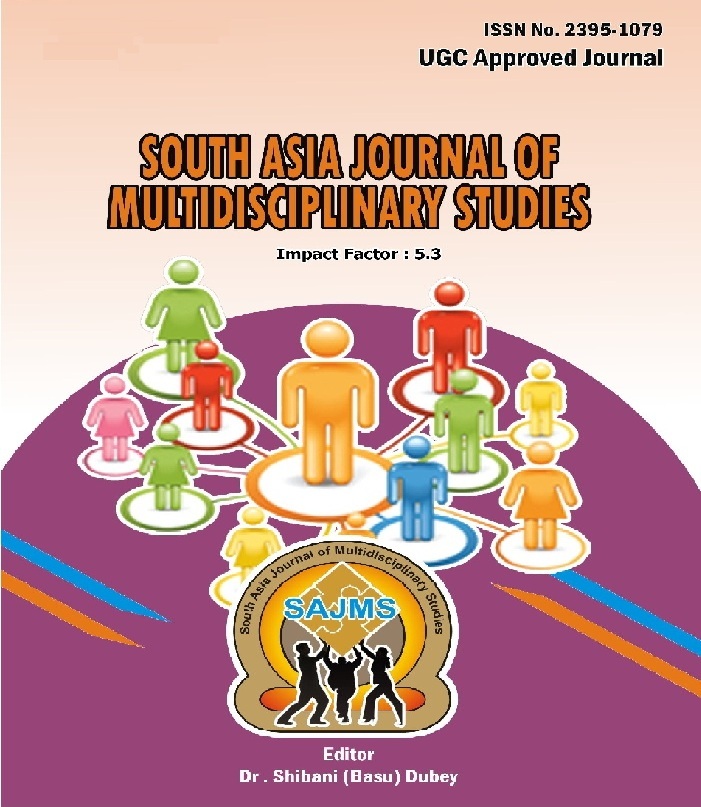A STUDY ON CONSUMER PREFERENCE ON BRANDED JEWELLERY AND NON-BRANDED JEWELLERY
Keywords:
Non-branded jewellery, Branded Jewellery, need, purchasing powerAbstract
The study of consumer behavior help marketer to forecast a consumer behavior in the market; it also manufacturing understanding of the role that consumption has in the lives of individuals. Consumer behavior is defined as a behavior that consumers display while searching for purchase, evaluation, using and disposal of products, services and ideas that they to satisfy their needs. The study of consumer behavior is concerned not only with what consumers buy, but also with what they buy it, when, from where and how they buy it and how often they buy it. It is concerned with learning the specific meanings that products hold for consumers. Consumer research takes place at every phase of the consumption process; before the purchase, during the purchase and after purchases. It attempts to understand the buyer decision processes/buyer decision making process, both individually and in groups. It studies characteristics of individual consumers such as demographics, psychographics, and behavioral variables in an attempt to understand people's wants. It also tries to assess influences on the consumer from groups such as family, friends, reference groups, and society in general.References
Ahuvia, A. & Goodwin, C. (1994). Beyond smiling: social support and service quality, in Rust, R. & Oliver, R. (Eds). Service Quality: New Directions in Theory and Practice, Sage Publications, Thousand Oaks, CA, 139-71.
Almanza, B., Jaffe, W., & Lin, L. (1994). Use of the service attribute matrix to measure consumer satisfaction. The Hospitality Research Journal, 17(2), 63-75.
Allard, C.R. van Riel, Veronica L. and Petra J., “Exploring consumer evaluations of e-services: a portal site”, International Journal of Service Industry Management, 2001, 12(4), 359-377.
Bloemer, J. & Odekerken-Schröder, G. (2002). Store satisfaction and store loyalty explained by customer- and store-related factors. Journal of Consumer Satisfaction, Dissatisfaction and Complaining Behavior, 15, 68-80.
Assael, Henry. Consumer behavior and marketing action. Boston, MA: PWS-KENT Publishing Company. 1992.
Chowdhury, J., Reardon, J., & Srivastava, R. (1998). Alternative modes of measuring store image: An empirical assessment of structured versus unstructured measures. Journal of Marketing Theory and Practice, 6 (2), 72-86.
Cengiz, E. & Yayla, H.E. (2007). The effect of marketing mix on positive word of mouth communication: Evidence from accounting offices in Turkey. Innovative Marketing, 3 (4), 73-86.
Cronin, J.J., Brady, M.K., & Hult, G.T.M. (2000).Assessing the effects of quality, value, and customer satisfaction on consumer behavioral intentions in service environments. Journal of Retailing, 76(2), 193-218.
Churchill, A. G. & Peter, J. P. (1995). Marketing: Creating Value for Customers. Burr Ridge, IL: Irwin.
Dick, A. S. & Basu, K. (1994). Customer loyalty: Toward an integrated conceptual framework. Journal of the Academy of Marketing Science, 22(2), 99-113.
Kotler, P. (2005). According to Kotler: The World‟s Foremost Authority on Marketing Answers Your Questions. New York: AMACOM.
Lee, E. J. & Overby, J. W. (2004). Creating value for online shoppers: Implications for satisfaction and loyalty.
Lemon, K. N., Rust, R. T., & Zeithaml, V.A. (2001). What drives customer equity? Marketing Management, 10(1), 20-25.
Journal of Consumer Satisfaction, Dissatisfaction and Complaining Behavior, 17, 54- 67.
Downloads
Published
Issue
Section
License
Submission Preparation ChecklistSubmission Preparation Checklist
Before proceeding with your submission, please ensure that you have completed the following checklist. All items on the list must have a checkmark before you can submit your manuscript:

